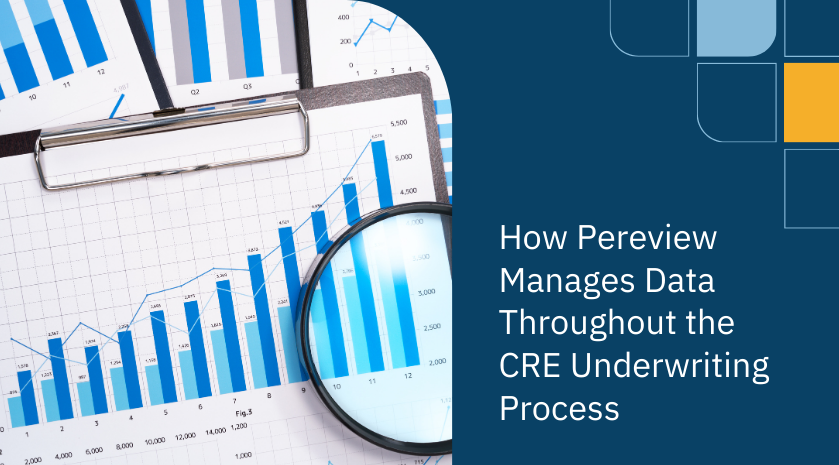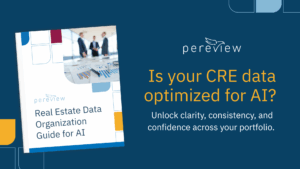Bad underwriting data poisons every subsequent stage in the life of a commercial real estate asset. Here’s how underwriting data gets dirty and what Pereview Software can do to identify and correct it.
Underwriting in the Asset Lifecycle
Of the seven stages in the lifecycle of a real estate asset, none is more critical than underwriting.
But why? What makes underwriting such an essential cog in the investment machine? What type of data is captured during underwriting? What advantage can a company gain from great underwriting data? How can that data become corrupt? Let’s examine these questions one-by-one:
What types of data are captured during underwriting?
Underwriting captures a lot of nitty-gritty information, such as property details, financials, rent rolls, and operational and performance information. It’s basically a complete numerical portrait of an asset. This becomes the baseline for measuring the performance of the asset compared to budgets, business plans, and actuals.
Why is this data so important to an asset management company?
Without this portrait of the asset, firms would have a very difficult time determining whether or not a given asset is worth acquiring. Therefore, having reliable underwriting data becomes a real competitive advantage for the acquiring company.
“There’s a huge upside to being able to capture data from a seller and efficiently analyze it, especially in markets where assets are trading quickly with compressed closing cycles,” says Derek Thornhill, executive director for Pereview. “That data is critical for determining if an acquisition is plausible or not.”
The measure of effectively executing your investment strategy is based on this dataset. Underwriting information is both a driver and a measure that will show up in operational and investor reports.
How does underwriting data become compromised?
Great data can’t exist without a great database. We’re talking about a database that is secure, accessible, and reportable – a Single Source of Truth where nothing is hidden or siloed.
Unfortunately, most firms use Microsoft Excel as their primary database for asset-related data. Excel is a fine software tool for many tasks, but it is a very poor database because (1.) it’s not secure and (2.) its files are much too easy to duplicate.
When Excel is your database, the temptation is strong for employees to create separate models for each asset. There are lots of companies out there with Excel ecosystems consisting of multiple files with disparate data sets – some of it stored in one location, some of it stored on personal computers.
It’s hard to leverage data consistently and generate reports from disparate data sets in various Excel files. It takes a lot of time and manual effort.
What’s the solution?
Ideally, companies should be relying on a specialized software product or solution for underwriting – one that relies on standardization to capture and report on data moving forward.
Standardization forces companies to think through the details of their business and determine what data is essential to their investment strategy, operating model, and reporting requirements. Standardization allows you to consistently and quickly capture data and analyze it.
By having standardized data management, firms can perform meaningful analysis across their portfolios to understand what drives their success.
How Pereview Can Help with Underwriting
Ultimately, it comes back to that earlier sentence: Ideally, companies should be relying on a specialized software product or solution for underwriting. That’s Pereview, the only Life of the Asset® solution on the market today.
The only software solution you need, Pereview integrates siloed systems and processes, allows for push-button reporting, creates a Single Source of Truth, and creates standardized workflows and guidelines for asset and data management.



